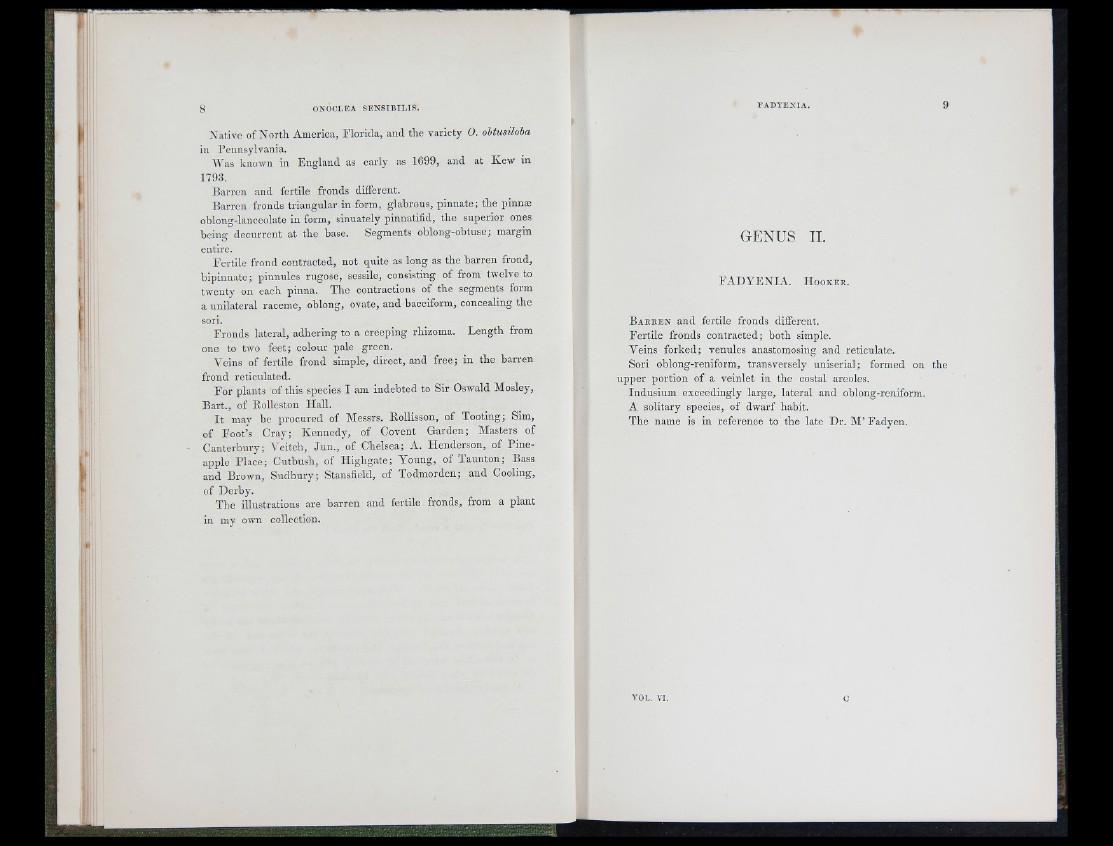
Native of North America, Florida, and the variety 0 . ohtusiloha
in Pennsylvania.
Was known in England as early as 1699, and at Kew in
1793.
Barren and fertile fronds different.
Barren fronds triangular in form, glabrous, pinnate; the pinnae
oblong-lanceolate in form, sinuately pinnatifid, the superior ones
being decnrrcnt at the base. Segments oblong-obtuse; margin
entire.
Fertile frond contracted, not quite as long as the barren frond,
bipinnate; pinnules rugose, sessile, consisting of from twelve to
twenty on each pinna. The contractions of the segments form
a unilateral raceme, oblong, ovate, and bacciform, concealing the
sori.
Fronds lateral, adhering to a creeping rhizoma. Length from
one to two feet; colour pale green.
Veins of fertile frond simple, direct, and free; in the barren
frond reticulated.
For plants of this species I am indebted to Sir Oswald Mosley,
Bart., of Rolleston Hall.
I t may be procured of Messrs. Eollisson, of Tooting; Sim,
of Foot’s Cray; Kennedy, of Covent Garden; Masters of
Canterbury; Veitcb, Jun ., of Chelsea; A. Henderson, of Pin e apple
Place; Cutbush, of Highgate; Young, of Taunton; Bass
and Brown, Sudbury; Stansfield, of Todmorden; and Cooling,
of Derby.
The illustrations are barren and fertile fronds, from a plant
in my own collection.
GENUS II.
FA D Y EN IA . H o o k e r .
B a r r e n and fertile fronds diiferent.
Fertile fronds contracted; both simple.
Veins forked; venules anastomosing and reticulate.
Sori oblong-reniform, transversely uniserial; formed on the
upper portion of a veinlet in the costal areoles.
Indusium exceedingly large, lateral and oblong-reniform.
A solitary species, of dwarf habit.
The name is in reference to the late Dr. M’ Fadyen.
VOL. VI.